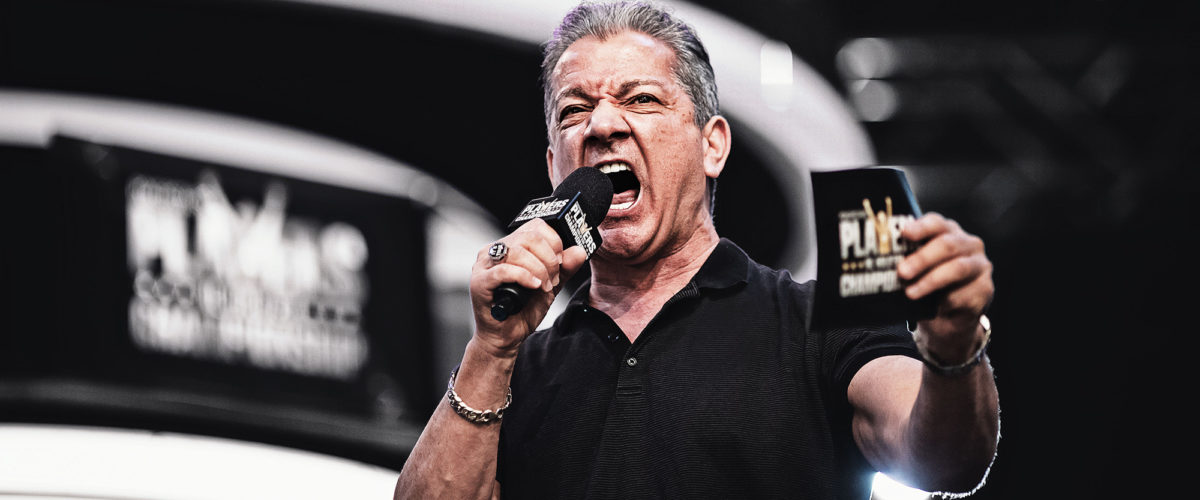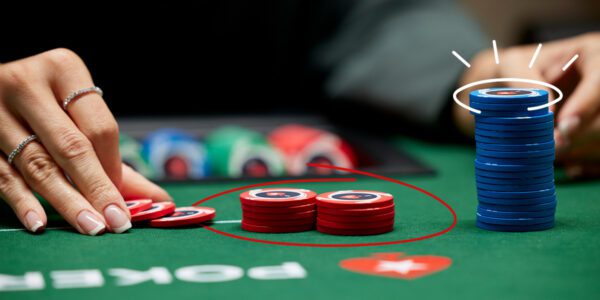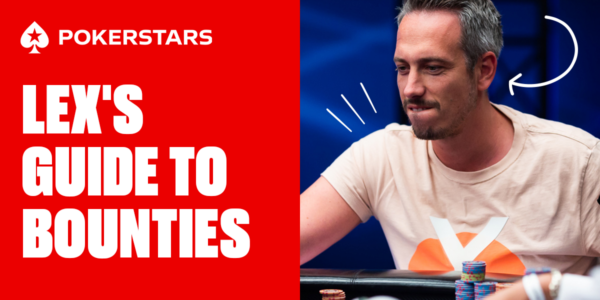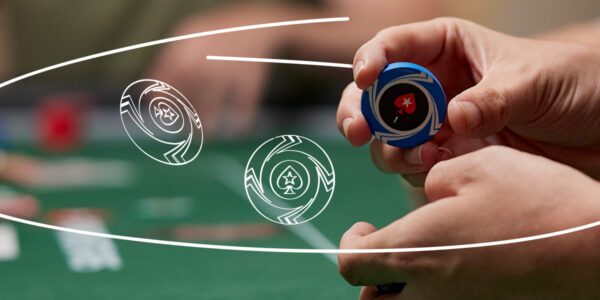The Mathematics of Bounties
In earlier articles, I covered why progressive knockouts are worth a try and how to roughly adapt your game..
Now let’s cover how a big bounty – either on your own head or that of your opponent – can make a big difference to the math of many a decision.
Perhaps the best way to see how bounties affect-decision making is to start off by analysing a hand in a non-bounty tournament. This will give us a strategic baseline.
Calling It Off in a Standard Tournament
The blinds are 500/1000.
Player A opens from the CO to 2,000. Player B 3-Bets from the BTN to 6,000.
Player A has 35,000 (35BB) and Player B has 120,000 (120BB).
Player A calls the 3-bet and the flop comes Q♦ 5♥ 3♠ . The pot is 16,000 including dead antes and blinds and the effective stack is now 29,000.
We are already approaching a situation where all-ins are looming on the horizon. The CO checks to the aggressor and the BTN bets 8000. CO shoves their entire 29,000.
Now BTN has a classic end of action spot decision. In order to break even in chips, they need to win (amount to call)/(amount to call + total pot) % of the time.
21,000 / (21,000 + 47,000) = 31%
The BTN needs 31% equity to break even in chips. Let’s say that BU’s hand was actually 6♣ 4♣ – a somewhat cheeky 3-bet bluff. Maybe the CO folds a lot to 3-bets, or maybe the BTN is just the sort of guy to attack a lot with the big stack. Either way, their decision is a close one now. It looks a lot like the 6-high hand has to hit a straight to win here – so their equity then is simply how often they get there. BTN has 8 outs. Since there are still two cards to come, BTN can use the rule of 4 to work out their equity.
The Rule of 4 states that we can multiply outs by 4 on the flop to find equity
BTN has roughly 32% equity, almost exactly what they need to break even. In a tournament with no bounties, it won’t matter one bit whether they call or fold.
You probably know that already. But read on to see how the bounty affects the equation…


Calling It Off in a Progressive Knockout Tournament
When we add a bounty to the equation, the call is an absolute no brainer for the BU. We can actually translate the money earned from bounties into chips and then input it into our calculation.
If there are 1000 players in the tournament to begin with and the buy-in is $10, and each player starts with 10,000 chips, then there are 10 million chips in play. The total prize pool is $10,000 and so each chip is equal to 10,000 / 10,000,000 = $0.001 – one tenth of a cent. In more understandable terms, a cent is equal to 10 chips.
Now, in a progressive knockout tournament, the amount of money won by eliminating an opponent depends on how many players that opponent has eliminated. Let’s imagine that the CO has amassed an $8.00 bounty. The extra $8.00 adds 800 cents to the pot. Since one cent = ten chips, we can pretend that the pot contains 8000 extra chips! Now BU’s math changes because we increase the total pot by 8000.
21,000 / (21,000 + 55,000) = 28%
BTN now has a clearly profitable call. Bounties really do make a large difference to the math of calling all-ins. Now imagine the effect this would have if the bounty on your opponent’s head was more extreme.
Going After Large Bounties
In this next hand, which occurs in the same tournament as above, you play the role of the BU.
You called with 64s in that hand and managed to river a straight to eliminate the BU.
From there you became one of the tournament favourites. With just 16 players left, you are playing seven handed. The blinds are 5000/10,000 and the ante is 1,000.
You get dealt Q♦ 3♦ in the BB. You have a giant stack of 2,100,500 (210BB) and it folds to the SB, who has only 120,000 (12BB) and a $60 bounty. They go all-in.
In a normal tournament, you shrug, you fold, and you move onto the next hand… but not in a progressive knockout.
To call here, without a bounty to scoop, your minimum equity to call would be:
110,000 / (110,000 + 137,000) = 44.5%
Now let’s add the bounty. Remember 10 chips are one cent so 6000 cents ($60) is 60,000 chips. Let’s add that top the pot.
110,000 / (110,00 + 137,000 + 60,000) = 36%
If SB is shoving a normal range of around 50% of hands, then we actually have 39% equity with Q♦ 3♦ and a profitable call. Moreover, it won’t hurt our tournament life too much if we lose. Go get that bounty!
Summary
- When you have a close decision, always lean towards investing your money when your opponent has a bounty on their head.
- Progressive Knockout tournaments often result in some very weird looking calls being correct.
- Chasing bounties is best when your own tournament life is not threatened by losing. The main source of value is still winning the tournament. Do not jeopardize your chances of survival by tangling with other big stacks just because they have a large bounty.














